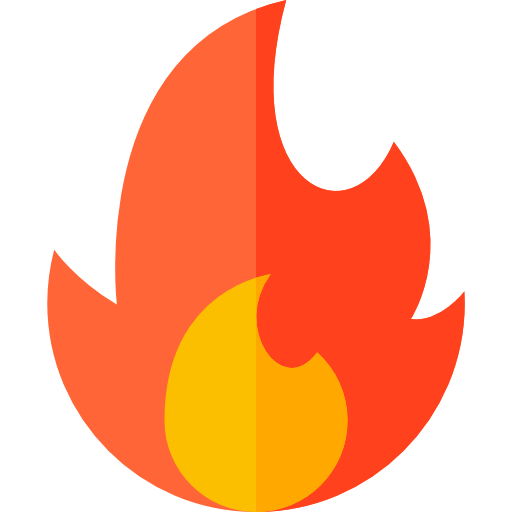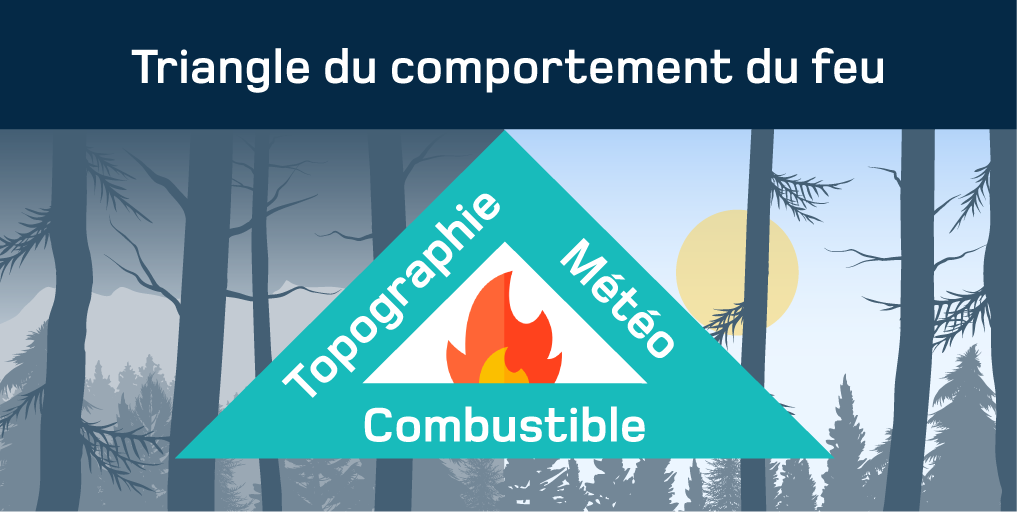Forest fires
Forests cover nearly 1 million square kilometres in Quebec, more than half the province’s total land area. That means that a forest fire event can quickly become a cause for concern. This is particularly the case in the boreal forests, which play an essential role in biodiversity and provide valuable resources for the province’s economy. Unfortunately, these forests have more forest fires due to their large number of resinous species, which are much more flammable than hardwoods.
Forest fires: A natural phenomenon
Forest fires are a natural phenomenon that has always existed in Quebec, and they play an essential role in ecological regeneration, disease and pest control, and the diversity of forest ecosystems.
However, climate change—with its warmer temperatures and lower humidity, in particular—is creating a climate conducive to more frequent, intense and unpredictable fires.
Wildfire season
480 
per year on average
Over the past ten years, Quebec has recorded an average of 480 vegetation fires each year. The fire season generally runs from April to October, although the period between April and June is usually the most intense. In spring, the first fires occur mainly in the south of the province. Early snowmelt and incomplete leaf maturation make fuel drier, promoting the spread of fires. However, June remains the month with the largest area of forest burned in the province as a whole.
Devastating forest fires in Quebec
Although Quebec generally experiences forest fires every year, some have been more devastating. For example, the huge Baie-Johan-Beetz inferno in Côte-Nord in 2013 closed Route 138 for several days, rendering several villages east of the municipality inaccessible.
More recently, in the spring and summer of 2023, high temperatures combined with a prolonged lack of precipitation created weather conditions leading to the creation and rapid spread of over 700 forest fires in Quebec. Hundreds of thousands of hectares of forests across several regions of the province burned, entailing the evacuation of several thousand people. Air quality several hundred kilometers away was affected, including in Montréal and New York City.
Factors behind forest fires
Forest fires arise from a combination of natural factors such as topography, weather and climate, and the availability and type of fuels. These interacting factors make up the “fire triangle” that governs fire behaviour. Each forest fire is unique, depending on the specific environment in which it occurs and develops.
Climatic factors
Weather and climate play a crucial role in the emergence and spread of wildfires. High temperatures and prolonged periods without precipitation increase the risk. In addition, strong winds can spread flames over long distances and help combustion by providing oxygen.
In Quebec, lightning is the main cause of forest fires. It is responsible for over 80% of forest fires in the province.
Other factors
Forest fires do not always start naturally. Human activity plays a major role, and potential sources of accidental fires include:
Neglected campfires
Unextinguished cigarettes
Uncontrolled burning of waste
Improper forestry or agricultural practices
The growing presence of human infrastructure on the outskirts of wooded areas
The accumulation of naturally-occurring combustible materials in forests also increases the risk of fire. These materials consist of any organic matter, living or dead, that can ignite, burn and facilitate the spread of fire. Stands of coniferous trees, for example, are more vulnerable to the rapid spread of fire than stands of deciduous trees, which generally contain more water.
